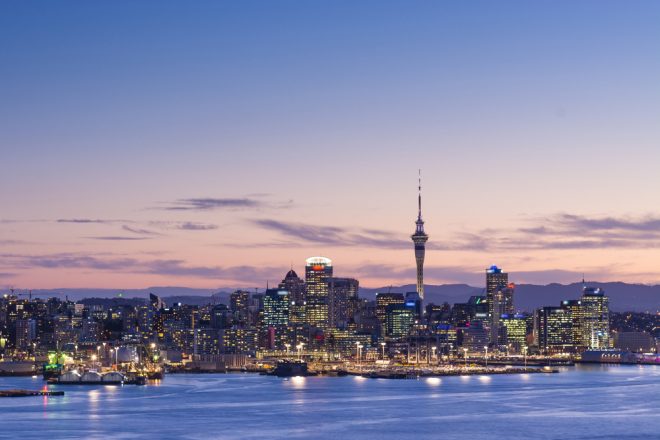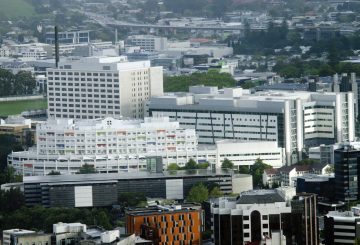Auckland’s iconic landmark the Sky Tower is celebrating its 25th birthday on August 3. The Tower has gone from controversial beginnings – many objecting to a tower of its size dominating the Auckland skyline – to become a much-loved symbol and feature of the City.
More than 10 million people have visited the Tower since it was built by Fletcher Construction in 1997. At 328 metres it’s the tallest structure in the Southern Hemisphere.
SkyCity’s CEO, Michael Ahearne, says the Tower is one of the most visited tourist attractions in the country: “SkyCity owns the Tower, but really we’re just the custodians of it – it really belongs to the people of Auckland.”
A renowned feature of the Tower is its ability to light up in different colours for charities such as Pink Ribbon Day, community initiatives, national holidays, milestones or other celebrations or events.
Notes:
Sky Tower has 65 levels, and a total of 1,267 stairs leading from the base to Sky Deck, the highest public observation level.
The elevators will take you to:
- Sky Lounge (182 metres) where you can relax with a coffee in the highest café in New Zealand
- The Main Observation level (186 metres), the Sky Tower’s main viewing platform. Stroll over 38mm glass floors, check the up-to-date live weather feeds, find out about Auckland with live-camera touch screen computers, or simply sit and take in the spectacular view
- Sky Deck (220 metres) is the highest public observation level in the Southern Hemisphere and offers amazing views through virtually seamless glass
The larger diameter base gives full resistance to seismic and wind forces. The Tower can withstand storms with winds gusting to 200kph/hour (125mph) – an occurrence which is predicted to happen only once in 1,000 years – and is capable of safely swaying one metre at the top.
Sky Tower is built to withstand an earthquake of a magnitude of 7.0 at 40 kilometres, or a magnitude of 8.5 at 360 kilometres.
In case of lightning strikes, a gold-plated spiked metal dynasphere, 50cm in diameter, is positioned at the top of the tower’s 90-metre steel mast. This is designed to attract lightning, direct it down the cable and into the foundations where energy is dispersed into the earth.
Press Release: SKYCITY


















































-360x245.jpg)










